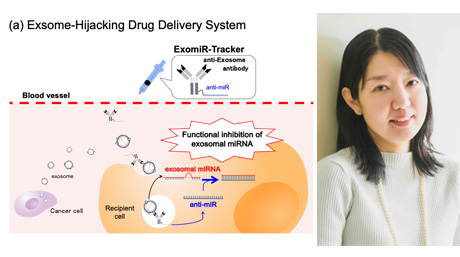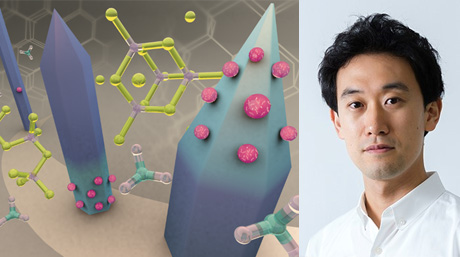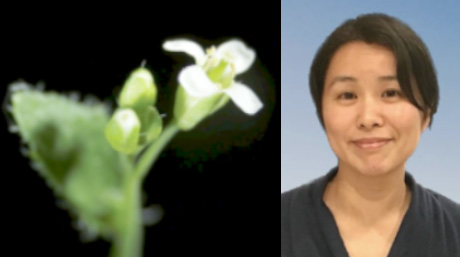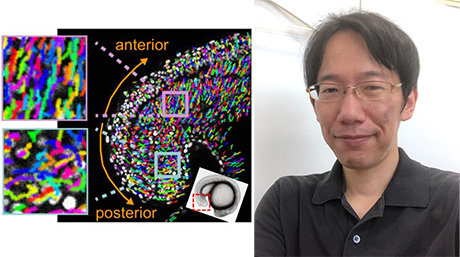Life Science and Technology News
【Labs spotlight】 Nakatogawa Laboratory
Revealing the mysteries of cellular self-eating
The Department has a variety of laboratories for Life Science and Technology, in which cutting-edge innovative research is being undertaken not only in basic science and engineering but also in the areas of medicine, pharmacy, agriculture, and multidisciplinary sciences.
This "Spotlight" series features a laboratory from the Department and introduces you to the laboratory's research projects and outcomes. This time we focus on Nakatogawa Laboratory.
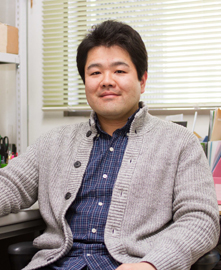
Areas of Supervision
Primary/Life Science and Technology
Associate Professor Hitoshi Nakatogawa![]()
*Professor Nakatogawa was promoted from Associate Professor to Professor on April 1, 2023.
| Degree | PhD 2002, Kyoto University |
|---|---|
| Areas of Research | Molecular Cell Biology, Biochemistry |
| Keywords | Autophagy, Protein/Organelle Degradation, Membrane Dynamics, Molecular Mechanisms |
| Website | Nakatogawa Laboratory |
Research interest
Most cellular activities are achieved by an exquisite balance between "synthesis" and "degradation" of biomolecules. Autophagy (self-eating) is a degradation system highly conserved among eukaryotic cells that can target not only cytoplasmic constituents such as proteins but also huge structures such as whole organelles. A hallmark of autophagy is the formation of the "autophagosome", which is a double membrane sac that sequesters material to be transported to the lysosome in mammalian cells or the vacuole in yeast and plant cells for degradation. How does this dynamic process of membrane biogenesis proceed? Where do membrane sources to build up the autophagosome come from within the cell? We are aiming at solving these intriguing mysteries using yeast as a model organism and various approaches, including molecular biological, biochemical, morphological, and structural biological techniques.
Research findings
Selected publications
- 1.Mochida, K., Oikawa, Y., Kimura, Y., Kirisako, H., Hirano, H., Ohsumi, Y., Nakatogawa, H.* Receptor-mediated selective autophagy degrades the endoplasmic reticulum and the nucleus. Nature 522, 359-362. (2015)
- 2.Mochida, K., Ohsumi, Y., Nakatogawa, H. Hrr25 phosphorylates the autophagic receptor Atg34 to promote vacuolar transport of α-mannosidase under nitrogen starvation conditions. FEBS Lett. 588, 3862-3869. (2014)
- 3.Tanaka, C., Tan, L.J., Mochida, K., Kirisako, H., Koizumi, M., Asai, E., Sakoh-Nakatogawa, M., Ohsumi, Y., Nakatogawa, H. Hrr25 triggers selective autophagy-related pathways by phosphorylating receptor proteins. J. Cell Biol. 207, 91-105. (2014)
- 4.Sakoh-Nakatogawa, M., Matoba, K., Asai, E., Kirisako, H., Ishii, J., Noda, N.N., Inagaki, F., Nakatogawa, H.*, Ohsumi, Y.* Atg12-Atg5 conjugate enhances E2 activity of Atg3 by rearranging its catalytic site. Nat. Struct. Mol. Biol. 20, 433-439. (2013)
- 5.Nakatogawa, H. Two ubiquitin-like conjugation systems that mediate membrane formation during autophagy. Essays Biochem. (Review) 55, 39-50. (2013)
- 6.Yamaguchi, M., Matoba, K., Sawada, R., Fujioka, Y., Nakatogawa, H., Yamamoto, H., Kobashigawa, Y., Hoshida, H., Akada, R., Ohsumi, Y., Noda, N.N., Inagaki, F. Noncanonical recognition and UBL loading of distinct E2s by autophagy-essential Atg7. Nat. Struct. Mol. Biol. 19, 1250-1256. (2012)
- 7.Nakatogawa, H.*, Ohsumi, Y. SDS-PAGE techniques to study ubiquitin-like conjugation systems in yeast autophagy. Methods Mol. Biol. (Review) 832, 519-529. (2012)
- 8.Nakatogawa, H.*, Ohbayashi, S., Sakoh-Nakatogawa, M., Kakuta, S., Suzuki, S.W., Kirisako, H., Kondo-Kakuta, C., Noda, N.N., Yamamoto, H., Ohsumi, Y. The autophagy-related protein kinase Atg1 interacts with the ubiquitin-like protein Atg8 via the Atg8 family interacting motif to facilitate autophagosome formation. J. Biol. Chem. 287, 28503-28507. (2012)
- 9.Nakatogawa, H.*, Ishii, J., Asai, E., Ohsumi, Y.* Atg4 recycles inappropriately lipidated Atg8 to promote autophagosome biogenesis. Autophagy 8, 177-186. (2012)
- 10.Noda, N.N., Satoo, K., Fujioka, Y., Kumeta, H., Ogura, K., Nakatogawa, H., Ohsumi, Y., Inagaki, F. Structural basis of Atg8 activation by a homodimeric E1, Atg7. Mol. Cell 44, 462-475. (2011)
- 11.Nakatogawa, H., Suzuki, K., Kamada, Y., Ohsumi, Y. Dynamics and diversity in autophagy mechanisms: lessons from yeast. Nat. Rev. Mol. Cell Biol. (Review) 10, 458-467. (2009)
- 12.Noda, N.N.#, Kumeta, H.#, Nakatogawa, H.# (# these authors contributed equally to this work), Satoo, K., Adachi, W., Ishii, J., Fujioka, Y., Ohsumi, Y., Inagaki, F. Structural basis of target recognition by Atg8/LC3 during selective autophagy. Genes Cells 13, 1211-1218. (2008)
- 13.Oh-oka, K., Nakatogawa, H., Ohsumi, Y. Physiological pH and acidic phospholipids contribute to substrate specificity in lipidation of Atg8. J. Biol. Chem. 283, 21847-21852. (2008)
- 14.Nakatogawa, H., Ichimura, Y., Ohsumi, Y. Atg8, a ubiquitin-like protein required for autophagosome formation, mediates membrane tethering and hemifusion. Cell 130, 165-178. (2007)
- 15.Muto, H., Nakatogawa, H., Ito, K. Genetically encoded but non-polypeptide prolyl-tRNA functions in the A-site for SecM-mediated ribosomal stall. Mol. Cell 22, 545-552. (2006)
- 16.Nakatogawa, H., Murakami, A., Mori, H., Ito, K. SecM facilitates translocase function of SecA by localizing its biosynthesis. Genes Dev. 19, 436-444. (2005)
- 17.Murakami, A., Nakatogawa, H., Ito, K. Translation arrest of SecM is essential for the basal and regulated expression of SecA. Proc. Natl. Acad. Sci. USA 101, 12330-12335. (2004)
- 18.Nakatogawa, H., Ito, K. The ribosomal exit tunnel functions as a discriminating gate. Cell 108, 629-636. (2002)
- 19.Nakatogawa, H., Ito, K. Secretion monitor, SecM, undergoes self translation arrest in the cytosol. Mol. Cell 7, 185-192. (2001)
- Research Laboratories and Subjects
- New degradation proteins show route to cell survival | Tokyo Tech News
- Tokyo Tech Staff and Associates Receive the "Commendation for Science and Technology by the Minister of Education, Culture, Sports, Science and Technology" | Tokyo Tech News
Contact
Associate Professor Hitoshi Nakatogawa
Room 928, B2 building, Suzukakedai campus
E-mail : hnakatogawa@bio.titech.ac.jp
*Find more about the lab and the latest activities at the lab site![]() (Japanese).
(Japanese).
*May 1, 2025:Some of the content has been updated with the latest information.

